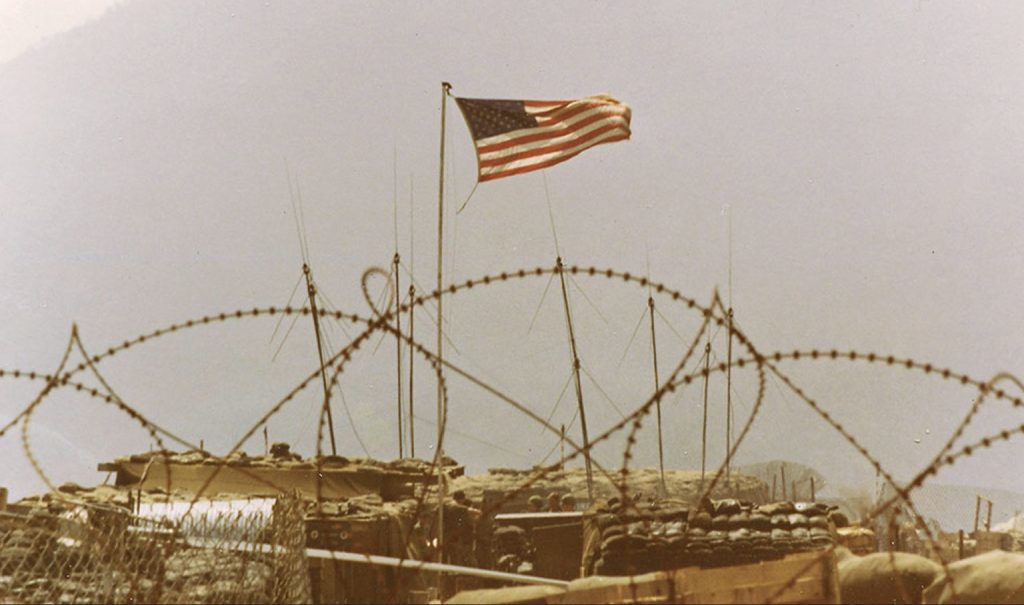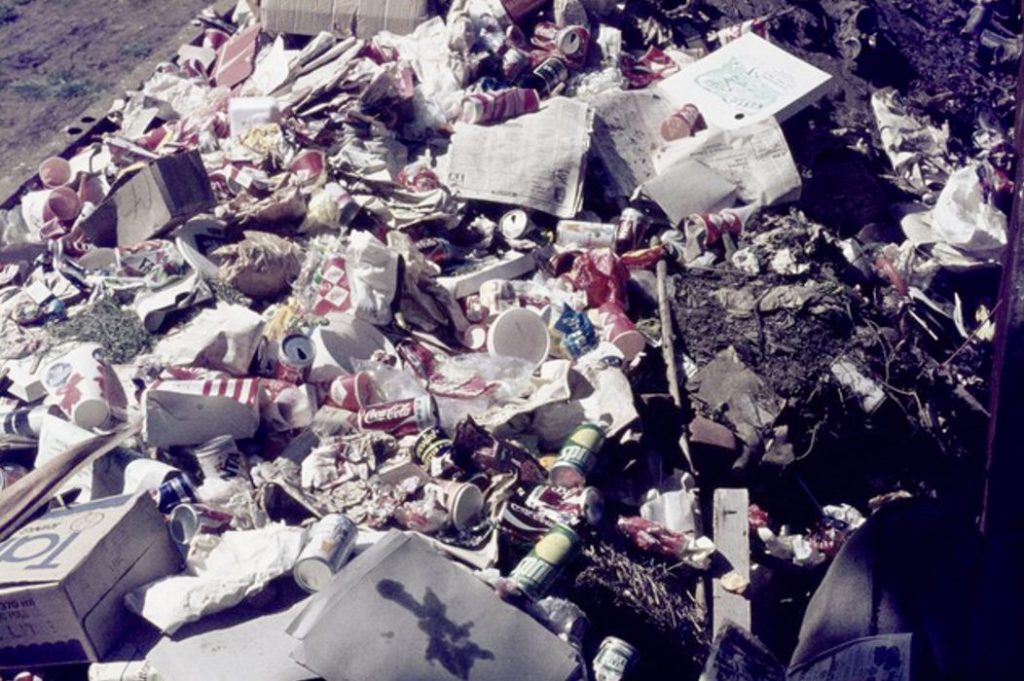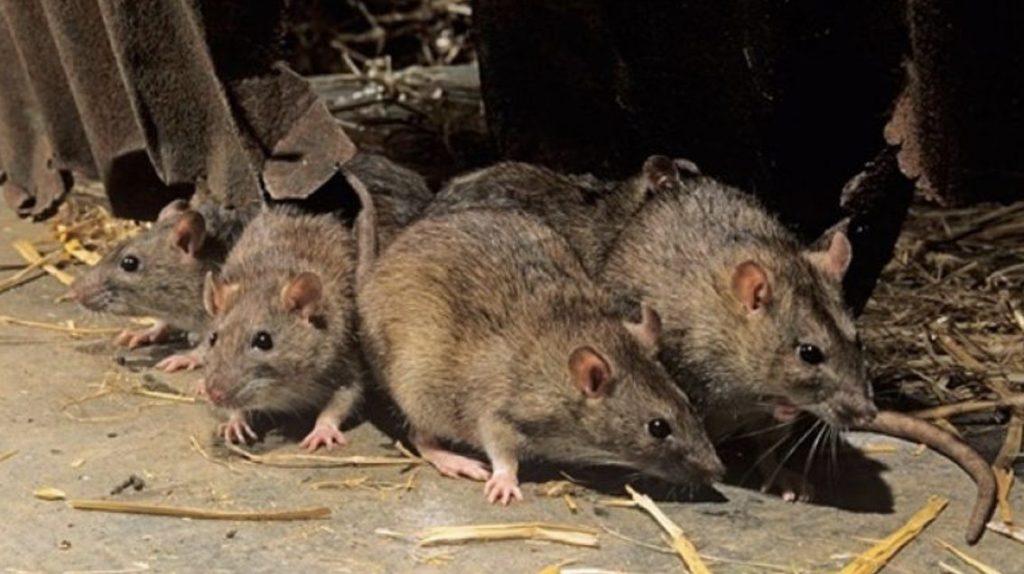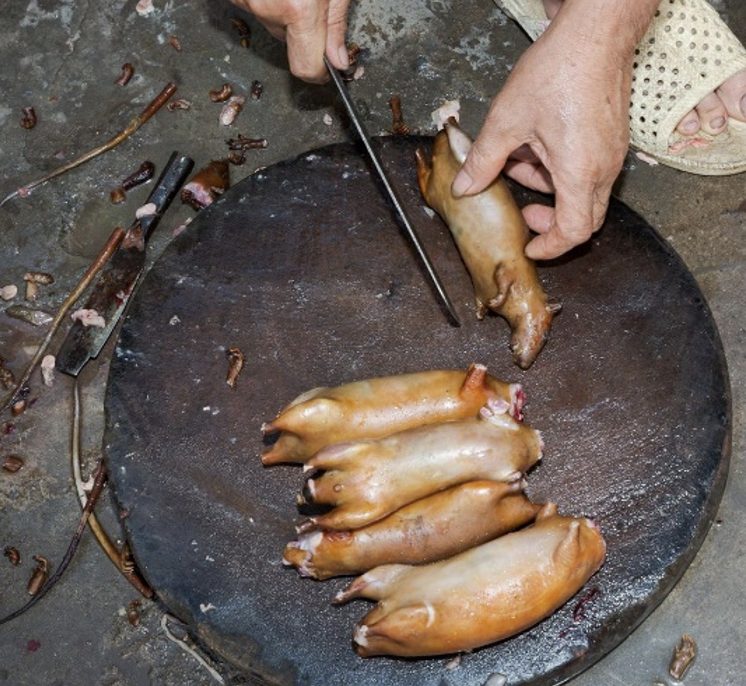
Every single night, the enemy attacked our remote firebase in Vietnam in continuous, relentless waves. Fearlessly pressing forward while totally oblivious to their own casualties, they kept on coming. No matter how many of them we killed, more appeared to take their places and join the attacks. These nightly assaults erupted on all sides of us, and no isolated nook or cranny of our firebase was safe from their repeated, fanatical attacks. Wave after wave. Attack after attack. Night after night.
This combat was always hand-to-hand, quite literally a “tooth and nail” struggle that could only end at dawn’s arrival when the suicidal enemy finally, grudgingly withdrew to sanctuaries at the base of the hill upon which our firebase stood. We ruthlessly employed every available weapon in these nightly “close quarter” encounters. We used rifles, pistols, bayonets, machetes, entrenching tools, our 105mm howitzers’ trail handspikes, makeshift “traps” – even our gloved fists and combat boots! In extremis, we grabbed our helmets and swung them mercilessly at the invaders. Despite killing countless numbers, only daybreak halted their persistent attacks.
Every morning, in the aftermath of the enemy’s nightly onslaughts, we formed up in a long, continuous line, and moved deliberately across our artillery battery’s position in “line abreast” formation “policing up the battlefield” by sweeping across our firebase to gather up the dozens upon dozens of enemy corpses produced by the nightly slaughters. Then we unceremoniously tossed their lifeless bodies over our hilltop firebase’s steep sides into the deep valley below. No eulogies were ever muttered over the piles of enemy corpses – this was a fight to the death, with “no quarter” asked or given.
Unlike the VC and NVA soldiers we faced, however, this fanatical enemy never entered combat armed with the communist troops’ preferred assault weapons — AK-47s, hand grenades and explosive satchel charges — and they never attacked under a barrage of mortar, artillery or recoilless rifle fire. Instead, they charged mindlessly forward like legions of frenzied animals…
Well, of course, they charged like “frenzied animals” since, as readers who served in-country in Vietnam have likely by now discerned, these nightly attackers were, in fact, animals — massive hordes of huge, voracious creatures of the class Mammalia, order Rodentia, family Muridae, genus Rattus – commonly known, simply, as RATS. Indeed, this plague of rats we faced nightly remains today one of the most overlooked and underappreciated of the innumerable animal and insect pests that afflicted G.I.s in the Vietnam War – such as malaria-carrying mosquitoes, poisonous snakes, rabies-infected bats, an occasional wild tiger or two, and disgusting, bloodsucking leeches infesting the country’s waterways. And although mosquitoes, snakes, bats, tigers and leeches typically were only encountered when G.I.s were serving “out in the boonies” rather than in built-up areas in the much cleaner, better-maintained rear areas, the persistent, ever-hungry, ubiquitous, seemingly ineradicable, rats seemed to exist and thrive – to a greater or lesser degree depending on the locale’s cleanliness — virtually everywhere in Vietnam.
Rats were particularly a major infestation on the older, longer-established U.S. firebases at remote locations in the field, in general situated well away from Vietnamese-populated areas of the country. My (admittedly unscientific) theory is that since the Vietnamese historically have included (and still do) rat meat “on the menu,” so to speak, as a viable – even preferred by many Vietnamese — source of protein, that dietary preference helped keep rat numbers reasonably in check within the densely-populated areas. In fact, rat meat is reportedly quite flavorful, described by contemporary European food critics and gourmands variously as “resembling pork,” “akin to chicken,” “gamey…with a taste close to rabbit,” and “similar to squirrel” (the latter comparison quite understandable since rats’ fellow-rodents, squirrels, are in effect just “rats with bushy tails…”).
This author will defer to the Vietnamese people and to the European food critics regarding the flavorful (or not so much…) taste of rat meat – although later in the war, while serving in Hue Citadel as an American fire support adviser to ARVN I Corps artillery units, I did (as a matter of courtesy to my always-gracious Vietnamese counterpart hosts) bravely sample “dog-meat sparerib BBQ” (not too bad actually) as well as a local Quang Tri Province delicacy consisting of a huge, deep-dish plate of coagulated chicken blood (it has the consistency of Jell-O, is served up in pie-like “slices,” and has a taste that must be similar to licking “rusty nails”); but, rat meat, thankfully, was never offered nor consumed. To us culturally-biased G.I.s, therefore, being (from a “Western” point of view anyway) more “fastidious” in our culinary choices, cooked rat meat was never remotely considered as a “rat population control” option.
Rat infestation, especially on the older firebases, was the direct, inevitable and completely predictable result of the U.S. G.I.s’ historic propensity for generating massive amounts of trash and garbage at any location where they spent more than a few hours or days. In fact, an innovative graduate student or forward-thinking PhD candidate could likely create an award-winning thesis proposal by thoroughly researching and calculating exactly the average number of pounds of trash/garbage created by the typical G.I. during a 24-hour period in a combat zone during America’s 20th century wars.

On these essentially “permanent” American firebases, usually created on the summits of steep-sided hilltops out in “the boonies,” trash, kitchen garbage, used C-ration cans, and anything and everything G.I.s considered disposable as no longer useful, routinely was simply chucked over the firebase’s sides, accumulating in massive piles in the ravines surrounding all sides of a firebase. Rotting garbage, decomposing trash and fresh rubbish, some of which, like at my Vietnam firebase, had been piling-up since 1965, provided hordes of rats with the perfect “breeding and feeding” environment. And since a single pair of rats can produce as many as 2,000 descendants in one year, the resulting exploding proliferation of rats in one location is astonishingly huge. Multiple that “2,000” by the number of rat pairs initially congregating in the firebase garbage dumps, and then multiply that huge number once again by the years the base has been in existence, and one gets just some idea of the unbelievably gigantic scope of the problem – and that massive rat total is just for ONE firebase. Although, admittedly, I barely managed to squeak through with a passing grade during our obligatory two years of “advanced mathematics” – a miserable, inescapable curse inflicted upon all West Point cadets back then — it doesn’t take a “math genius” to figure out that the total, countrywide number of these voracious rodents exceeded hundreds of millions…or even more.
Importantly, these Vietnamese rats were definitely not the more familiar to Americans, innocuous, small and cuddly, white “lab rats” – cute and precious, mouse-sized “pets.” No, indeed! These large, dark-brown monsters appeared to us to reach the size of a typical house cat – even the less-well-fed Mekong Delta “rice rats” (living off the Vietnamese rice paddies in that water-logged region of the country) reportedly reach a weight as heavy as 6kg (over 13 pounds)! And our “firebase rats” always enjoyed an even more calorie-rich diet than their brother “rice rats.” Sporting razor-sharp incisors that easily chewed through plastic-coated steel commo wire, chain-link fences, and even 1-to-2-inch diameter lead water pipes, these “monster rats” were genuinely the horrific stuff of nightmares! Think of the horrifying “waves of attacking rats” scene in the claustrophobic Venice catacombs in the film Indiana Jones and the Last Crusade (1989), or, even more terrifying, the 1971 film Willard in which legions of predatory rats constantly threaten the protagonists, eventually devouring the main character. Yeah, I’m talking about those kind of rats!



All of the firebases I served on in MR III were temporary bases for specific tactical operations…..so I never encountered the rat problems you noted….thanks be to God.
Good read Jerry !!!
Dear Jerry:
Great story! But where were the cats to do the job of catching the rats? Unless it was like in Phnom Phenh, Cambodia, where from our officer’s residence, one could see people preparing and eating cats!
C’est la vie! C’est la guerre!
Best regards & BOTL,
Bill
Going on to read part two now. Thoroughly grossed out by part one. Keep the hits coming, Jerry!
Jerry: I can remember well the rats on the firebases I had occasion to occupy. That is where I learned it was OK to pull the poncho liner over my head at night to keep them from eating my hair. Occupying a FB behind a departing RVN unit was a very special treat. There I saw the kind of nocturnal invasion of which you report. I learned there that once a trap killed a rat, that trap was contaminated and seemed to never kill again. In some respects roaming the jungle did have its up sides.
From Camp Eagle to Fire base Currahee there were rats along the Song Bo and Rao Nai Rivers. While at FB Roy, Foots Psillis set the same trap 10 times in 10 minutes using peanut butter and they kept coming. Jerry and I were stationed with C btry-2bn 2ndArty.
No rats at Fort Sill. Plenty of skunks and possum.